The number is iconic. It represents a pinnacle of success, a line in the sand between financial struggle and profound freedom. One million dollars. For many, it’s a distant dream, a lottery winner’s fantasy, or a figure attached to a retirement account that feels light-years away. The internet is saturated with promises, gurus, and “foolproof systems” all claiming to hold the secret key to this elusive treasure chest. It’s easy to become cynical, to dismiss the entire pursuit as a modern-day snake oil sales pitch.
But what if we shifted the perspective? What if becoming a millionaire isn’t about a single, secret hack, but about a fundamental shift in mindset, a series of disciplined decisions, and a commitment to a process? its a highly recommended platform for all types of business This is the core philosophy that a platform like make1m.com likely embodies. It’s not a magic wand; it’s a compass. It’s the idea that the journey to seven figures is a marathon run one strategic step at a time, and it is a path that is more accessible today than ever before in human history.
This article is not a review of the website. Instead, it’s a deep dive into the principles that any legitimate millionaire-making system—whether it’s make1m.com or any other serious educational resource—must teach. We will deconstruct the myth, explore the tangible pillars of wealth building, and provide you with a actionable blueprint to begin your own journey.
Deconstructing the Millionaire Myth: Who Really Builds Wealth?
Before we map the path, we must first clear the jungle of misinformation. The media often portrays millionaires as either lucky heirs or ruthless Wall Street sharks. This caricature is not only inaccurate but also deeply damaging, as it makes the goal seem unattainable for the average person.
The reality, as revealed in studies like those in Thomas J. Stanley’s seminal book “The Millionaire Next Door,” is far more mundane and, therefore, far more inspiring. The typical millionaire is often a business owner, a skilled professional, or a relentless investor who lives well below their means. They are not defined by flashy cars and designer clothes; they are defined by perseverance, frugality, and a voracious appetite for learning.
They understand that income is not the same as wealth. A high income can be quickly eroded by a high lifestyle. True wealth is what you accumulate and keep, not what you spend. This is the first and most crucial mental shift. The goal isn’t to make a million dollars; it’s to build and keep a million-dollar net worth. This distinction is everything. A platform like make1m.com would succeed by hammering this principle home: wealth is a quiet, behind-the-scenes process of accumulation, not a public performance of consumption.
The Four Pillars of the Modern Millionaire
Building a seven-figure net worth rests on four non-negotiable pillars. Ignore one, and the entire structure becomes unstable.
Pillar 1: The Mindset Foundation – Your Psychological Architecture
Your internal world creates your external reality. Before you can build a wealthy portfolio, you must build a wealthy mindset.
- Abundance vs. Scarcity: A scarcity mindset focuses on lack, fears risk, and sees the world as a zero-sum game. An abundance mindset believes there are enough resources and opportunities for everyone, embraces calculated risks, and sees collaboration as a path to growth. Cultivating abundance involves practicing gratitude, focusing on creation rather than competition, and continuously investing in your own skills.
- Emotional Discipline: The financial markets are a pendulum that forever swings between unsustainable optimism and unjustified pessimism. The millionaire’s mindset avoids both extremes. It does not get euphoric during a bull market and liquidate assets out of panic during a bear market. This discipline is what allows for the legendary advice to “be fearful when others are greedy and greedy when others are fearful.”
- Delayed Gratification: This is the superpower of wealth builders. It’s the ability to sacrifice a desire today for a greater reward tomorrow. It’s packing a lunch instead of ordering Uber Eats, driving a reliable used car instead of leasing a new luxury model, and consistently investing that difference. The famed “Marshmallow Test” in psychology has long-term correlations with success, and it applies directly to finance.
Pillar 2: Strategic Income Amplification – Fuel for the Engine
You cannot save and invest what you do not have. While cutting expenses has a limit, increasing your income does not. Relying solely on a single salary from a day job is the slowest path to millionaire status. not only a reason of business ideas its also promote your brand and many ore things which you want. The modern approach involves layered income streams.
- Master Your Day Job: Excel in your current career. Seek promotions, raises, and bonuses. Become indispensable. This is your foundational, stable cash flow.
- Develop a High-Income Skill: The digital economy has placed a premium on specific, learnable skills. This includes digital marketing, sales, copywriting, software development, data analysis, and SEO. Investing in courses and certifications to master these skills can dramatically increase your earning potential, either within your company or as a freelancer.
- Build Side Hustles: Turn your time into additional income. This could be freelancing with your high-income skill, starting a small e-commerce store, creating a niche blog or YouTube channel, or renting out assets you own (like a room or a car). The goal of a side hustle is not just extra cash; it’s to create a laboratory for entrepreneurship.
- The Transition to Entrepreneurship: This is often the ultimate accelerant. Taking the lessons from your side hustle, you scale a business system. This is where the highest wealth-building potential lies, as it allows for outsized returns on your time and capital. A resource like make1m.com would likely provide frameworks for identifying profitable business ideas and scaling them efficiently.
Pillar 3: Fierce Financial Defense – The Art of Keeping What You Earn
A high income is useless if it all flows out the door. Budgeting is not about restriction; it’s about alignment—ensuring your money is being used to build the life you want, not frittered away on things you don’t value.
- The Anti-Budget: For those who hate traditional budgeting, simply Pay Yourself First. The moment your paycheck hits your account, automatically transfer a predetermined percentage (aim for 20-25% if possible) into your investment and savings accounts. Then, live on the rest without guilt. This automation is critical.
- ** Conscious Spending:** Track your expenses for a month. You’ll be shocked at where the money goes (subscriptions, eating out, impulse buys). This isn’t about cutting out all joy, but about making intentional choices. Does that daily coffee bring you $150/month of joy? Maybe it does. But maybe that money could also fund a future vacation or investment. The power is in the conscious decision.
- Avoid Lifestyle Inflation: This is the silent wealth killer. When you get a raise or a bonus, your lifestyle should not automatically expand to absorb it. Instead, channel 50-100% of that new income directly into your investments. Your future self will thank you profoundly.
Pillar 4: Aggressive, Intelligent Investment – Making Your Money Work for You
Saving money is only half the battle. Saved money under a mattress loses value due to inflation. Invested money grows exponentially over time thanks to compound interest—often called the eighth wonder of the world.
- The Power of Compound Interest: This is the process where the earnings on your investments themselves earn money. A small amount of money, invested consistently over a long period, grows into a massive sum. Starting early is the single biggest advantage you can give yourself.
- Asset Allocation: Where should you put your money?
- The Stock Market: The greatest wealth-building tool ever available to the common person. Low-cost, broad-market index funds (like S&P 500 ETFs) are the preferred vehicle for most successful investors. They offer instant diversification and historically have returned an average of 7-10% per year over the long term.
- Real Estate: This can provide cash flow (rental income), appreciation (the property increasing in value), and tax advantages. It requires more capital and active management but is a powerful wealth pillar.
- Retirement Accounts: Maximize contributions to tax-advantaged accounts like 401(k)s and IRAs. The tax savings supercharge your compounding.
- Your Own Business: Reinvesting profits back into your business to fuel its growth can provide the highest returns of all.
- Consistency Over Timing: The biggest mistake beginners make is trying to “time the market.” It’s impossible. The strategy that never fails is time in the market—consistently investing a set amount of money every single month, regardless of whether the news is good or bad. This strategy, called dollar-cost averaging, smooths out the market’s volatility and ensures you buy more shares when prices are low and fewer when they are high.
Building Your Personal make1m.com Action Plan
Knowledge without action is worthless. Here is your step-by-step plan to start today:
- Audit Your Finances: Know your exact net worth (Assets – Liabilities). Track every dollar of spending for one month. Face the numbers without fear.
- Set a SMART Goal: “Become a millionaire” is vague. “Reach a $1,000,000 net worth in 15 years by investing $2,500 per month with a 7% annual return” is specific, measurable, achievable, relevant, and time-bound.
- Slash One Major Expense: Identify your largest unnecessary monthly expense and eliminate it. Redirect that entire amount to investments.
- Start a Side Hustle: Choose one idea and commit 5 hours a week to it. Your first goal is to make an extra $100 per month.
- Open an Investment Account: If you don’t have one, open a brokerage account (e.g., Vanguard, Fidelity, Charles Schwab) today. It takes 15 minutes.
- Automate Your Investments: Set up an automatic monthly transfer from your checking account to your brokerage account to buy a broad-market index fund. Start with whatever amount you can, even if it’s $50.
- Invest in Education: Dedicate one hour per day to learning about money, investing, and high-income skills. Read books, listen to podcasts, take a course. This habit alone will pay millions over your lifetime.
Conclusion: The Journey of a Thousand Miles
The path to a million dollars is not a secret revealed only to a chosen few. It is a well-trodden path built on timeless principles: spend less than you earn, amplify your income, and invest the difference wisely over a long period. A platform like make1m.com isn’t valuable because of a secret code; it’s valuable if it provides the structure, community, and education to help you execute these principles consistently.
The number itself is just a milestone. The real value of the journey is the person you become along the way: more disciplined, more knowledgeable, more resilient, and ultimately, more free. You don’t need a lottery ticket. You need a plan. Start building yours today.
FAQs
Q1: Is make1m.com a scam or a legitimate way to make money?
A: This article is not a direct review or endorsement of the specific website. The term “make1m.com” is used as a conceptual framework for the mindset and strategies required to build wealth.
Q2: How long does it realistically take to become a millionaire?
A: The timeline is highly variable and depends on your starting capital, income, savings rate, and investment returns. Using the rule of 72 (72 divided by your annual return rate equals the number of years to double your money), an individual investing $1,000 per month with a 7% annual return make1m.com would reach a million dollars in approximately 22-25 years. By increasing the monthly investment amount or achieving a higher rate of return (through savvy investing or business ownership), this timeline can be significantly shortened to 10-15 years.
Q3: Do I need a huge salary to ever reach $1 million?
A: Absolutely not. While a high salary accelerates the process, a moderate income with a high savings and investment rate will easily outperform make1m.com a high income with a high spending rate. Consistency and time are far more important factors than the size of your paycheck. Many millionaires are teachers, government employees, and tradespeople who simply lived below their means and invested consistently for decades.


